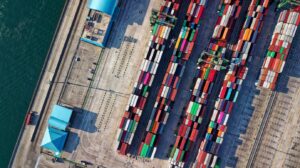Introduction
The logistics industry, often regarded as the backbone of global trade and commerce, operates behind the scenes, orchestrating a symphony of movements that keep the world connected. However, beyond the conventional understanding of shipping and deliveries, the logistics sector harbors a treasure trove of fascinating and lesser-known facts that showcase its significance and complexity. Therefore, In this comprehensive post, we delve deeper into the intriguing aspects of the logistics industry, from its ancient roots to its present-day innovations.
Ancient Origins of Logistics
The roots of logistics can be traced back to ancient civilizations that relied on efficient transport and storage systems for trade and warfare. However, the Egyptians and Romans were pioneers in utilizing logistics techniques to move goods and resources across vast territories. Building the Great Wall of China and the logistics involved in supplying its construction exemplify the ingenuity and organizational skills of ancient logistics practices.

The Immense Scale of the Industry
The logistics industry is a colossal contributor to the global economy, employing millions of people worldwide. From truck drivers and warehouse workers to customs officials and supply chain managers, the sector provides a diverse array of job opportunities. According to the World Bank, logistics spending accounts for around 10% of the world’s Gross Domestic Product (GDP), underscoring its significant economic impact.
Ports as Nerve Centres of Logistics
The world’s busiest ports serve as critical hubs of logistics activities. The top three busiest ports, as of my knowledge cutoff in 2021, are noteworthy examples:
Port of Shanghai, China:
Holding the title of the world’s busiest port, Shanghai handles an astounding amount of cargo, making it a crucial player in global trade.
Port of Singapore:
Renowned as the “Lion City,” Singapore’s strategic location has transformed it into a bustling maritime logistics hub in Southeast Asia.
Port of Shenzhen, China:
This port’s rapid growth is attributable to China’s economic expansion and its position as a key player in international trade.

Containerization Revolutionizing Global Trade
Basically, the concept of containerization revolutionized the logistics industry in the 1950s. Prior to this innovation, cargo was laboriously loaded and unloaded piece by piece. Resulting in time-consuming and costly processes. The standardization of shipping containers streamlined logistics operations, significantly reducing loading times, and enabling intermodal transportation.
The World’s Longest Supply Chains
The logistics industry showcases its prowess in managing astonishingly long and intricate supply chains. For instance, a seemingly simple cup of coffee involves one of the world’s longest supply chains. From coffee beans grown in Latin America, processed in Africa. And transported to roasting facilities worldwide, it exemplifies the extensive global reach of logistics operations.

E-Commerce’s Profound Impact
The rise of e-commerce has redefined the logistics landscape. Online shopping’s exponential growth has led to an unprecedented surge in package deliveries. To meet the increasing demand, logistics companies are exploring innovative last-mile delivery solutions, such as drone delivery, to ensure speedy and efficient service.
Weather Challenges and Adaptations
The logistics industry faces diverse challenges, including unpredictable weather events. For instance, extreme phenomena like hurricanes, and floods can disrupt transportation networks and supply chains, causing delays and financial losses. Consequently, logistics professionals are continuously adapting their strategies to mitigate the impact of adverse weather conditions.
Green Logistics and Sustainability
With environmental concerns taking center stage, the logistics industry is embracing sustainable practices. For instance, companies are actively adopting green logistics approaches, such as using eco-friendly vehicles, optimizing routes to minimize fuel consumption. Therefore, these steps are crucial in reducing the industry’s carbon footprint and ensuring a greener future.

Conclusion
Basically, the logistics industry is a dynamic and indispensable force that shapes our modern world. Therefore, from ancient trade routes to cutting-edge innovations, logistics has remained at the heart of human progress, fostering economic growth and connectivity. As technology advances and sustainability becomes a global priority, the logistics sector will continue to evolve, adapting to meet the demands of a rapidly changing world. The next time you receive a package at your doorstep or enjoy a cup of coffee, take a moment to appreciate the vast complexities and fascinating intricacies of the logistics industry that make it all possible.

